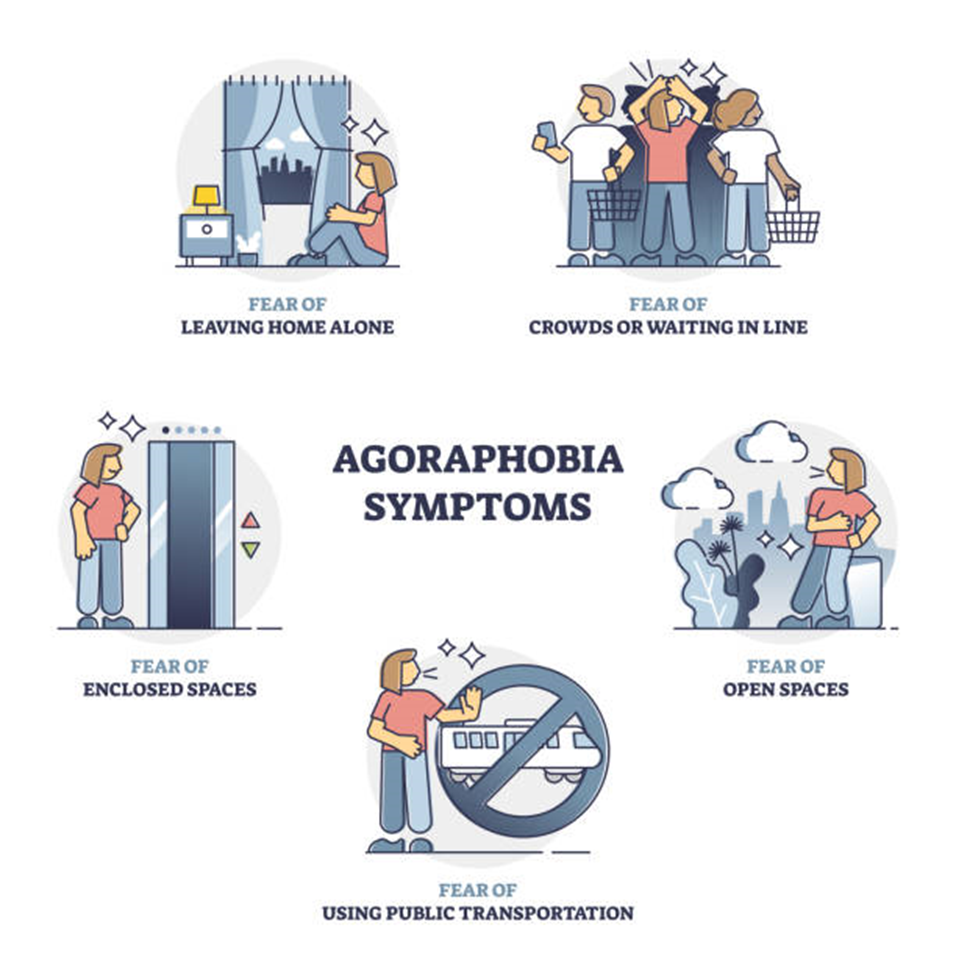A nurse in a mental health clinic is assessing a client who was brought in by her adult daughter. The daughter states that her mother has not been able to leave her home for weeks because she is afraid to be outdoors alone. Which of the following phobias should the nurse anticipate planning care for managing?
Acrophobia
Xenophobia
Agoraphobia
Mysophobia
The Correct Answer is C
Choice A reason: Acrophobia is the fear of heights, which is not indicated by the client's fear of being outdoors alone.
Choice B reason: Xenophobia is the fear of strangers or foreigners, which does not align with the client's described fear.
Choice C reason: Agoraphobia is the fear of open spaces or being in crowded, public places like markets. It also includes the fear of leaving a safe place, such as home, which aligns with the client's symptoms.

Choice D reason: Mysophobia is the fear of germs, which is not related to the fear of being outdoors alone.
Nursing Test Bank
Naxlex Comprehensive Predictor Exams
Related Questions
Correct Answer is D
Explanation
Choice A reason: The statement about fear being a response to an unknown threat is a common perception, but it does not reflect an understanding of anxiety as a broader concept.
Choice B reason: While anxiety and fear are related, they are not the same; fear is a response to a known or understood threat, whereas anxiety is often more diffuse and not tied to a specific stimulus.
Choice C reason: This statement reflects a negative view of anxiety and does not acknowledge that anxiety can sometimes be a normal and even productive response to stress.
Choice D reason: Recognizing that anxiety is a natural part of life and cannot be completely eliminated reflects an understanding of anxiety as a normal human emotion and is indicative of a successful education session.
Correct Answer is ["A","C","D","E"]
Explanation
Choice A reason: Personality traits are enduring and can be resistant to change, making treatment challenging.
Choice B reason: This statement is not accurate; clients with personality disorders may not always be receptive to treatment.
Choice C reason: Slow progress and clients discontinuing treatment are common barriers in treating personality disorders.
Choice D reason: Clients may not recognize the need for change, which can hinder the therapeutic process.
Choice E reason: Clients may identify with their personality traits, even if they are maladaptive, and may resist changing them.
Whether you are a student looking to ace your exams or a practicing nurse seeking to enhance your expertise , our nursing education contents will empower you with the confidence and competence to make a difference in the lives of patients and become a respected leader in the healthcare field.
Visit Naxlex, invest in your future and unlock endless possibilities with our unparalleled nursing education contents today
Report Wrong Answer on the Current Question
Do you disagree with the answer? If yes, what is your expected answer? Explain.
Kindly be descriptive with the issue you are facing.
